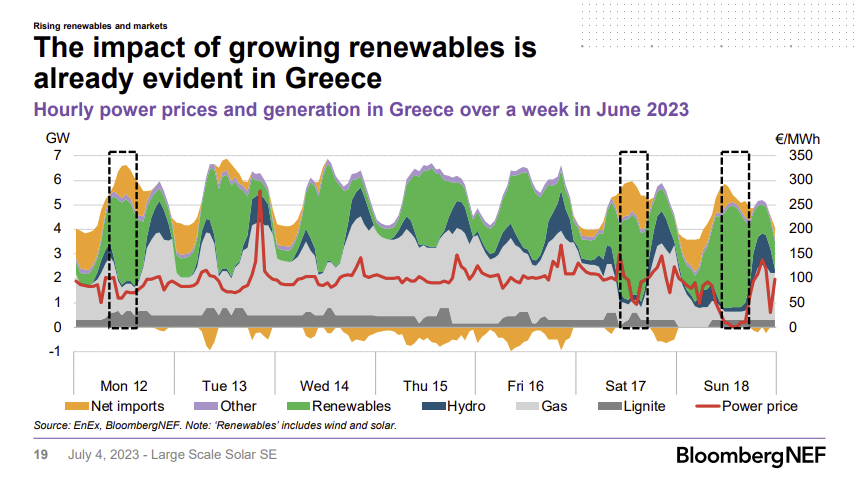According to BloombergNEF, it is forecast that by 2030 additional 11 GW of small and large-scale photovoltaic installations will be integrated into the Greek electricity system, compared with the data of 2022. This indicates high growth rates for the photovoltaic industry in the coming years. Head of Energy in Europe, Andreas Gandolfo, presented these BloombergNEF key estimates for the future of the renewable energy sector, focusing especially on the two key technologies, photovoltaic and wind, during the Large Scale Solar SE conference held this week.
According to the chart below, BloombergNEF predicts an increase in both small photovoltaic power units, mainly for household installations, and large units. Interesting is the fact that the forecast for the total installed capacity of photovoltaic plants in 2030 significantly exceeds the target set by the National Energy and Climate Plan in terms of installed technology capacity.
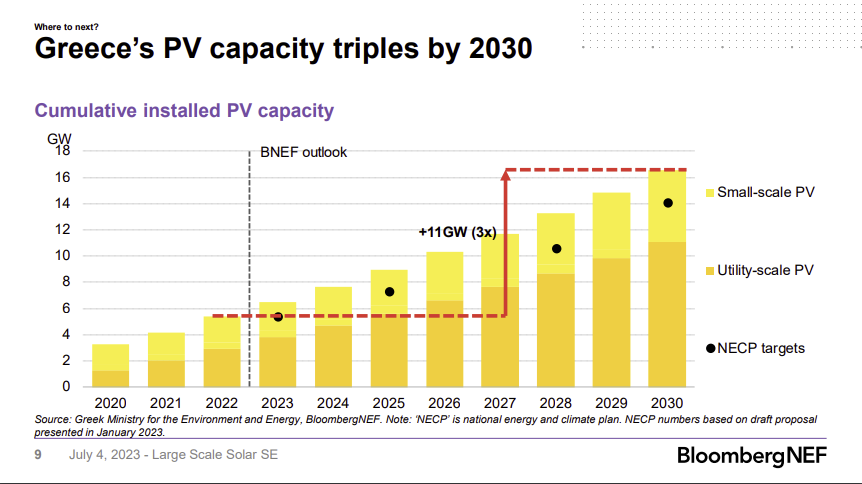
Based on the analyses presented at the conference, BloombergNEF confirms Greece’s growing importance in the European photovoltaic market. Specifically, Greece is around the European average in terms of relative growth of solar power and the addition of new power in the period from 2022 to 2030.
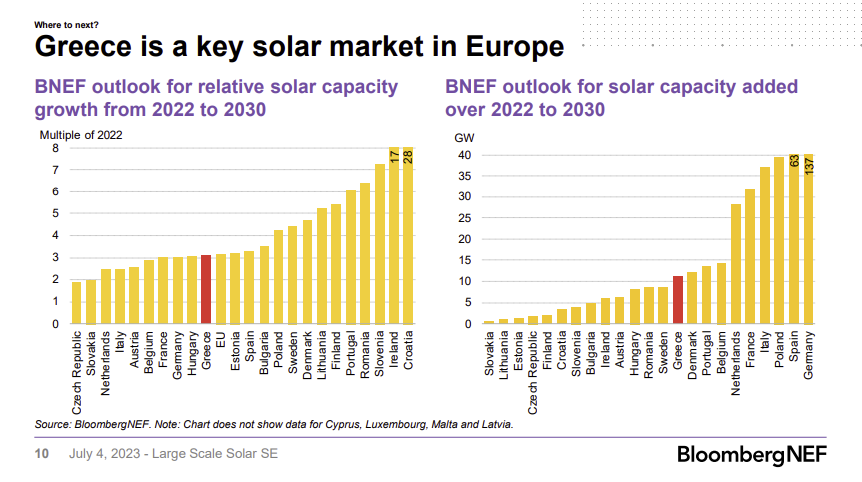
In addition, the following transparency shows that the Greek photovoltaic marketins significant growth prospects, showing considerable margins for the future.
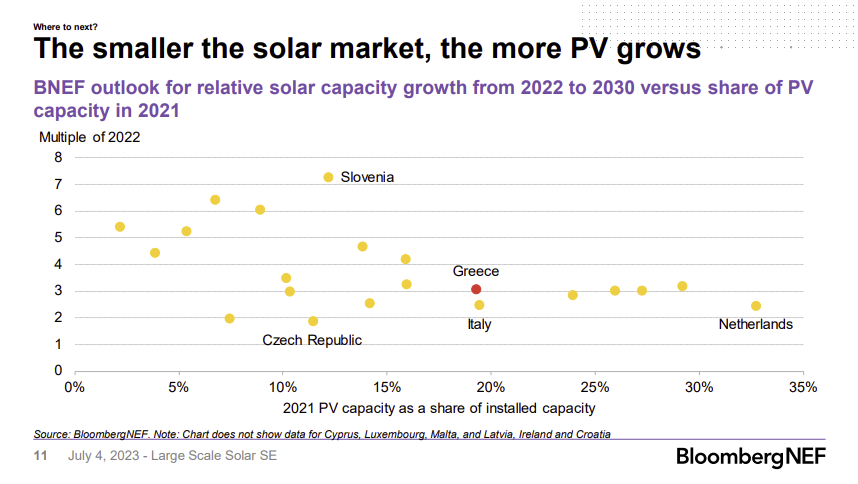
According to BloombergNEF, its estimate for ground wind turbines shows a power increase of 2.7 GW between 2022 and 2027. It is observed that the wind sector has recorded lower growth rates throughout the European Union and, therefore, also in Greece, compared to the corresponding numbers of photovoltaic plants.
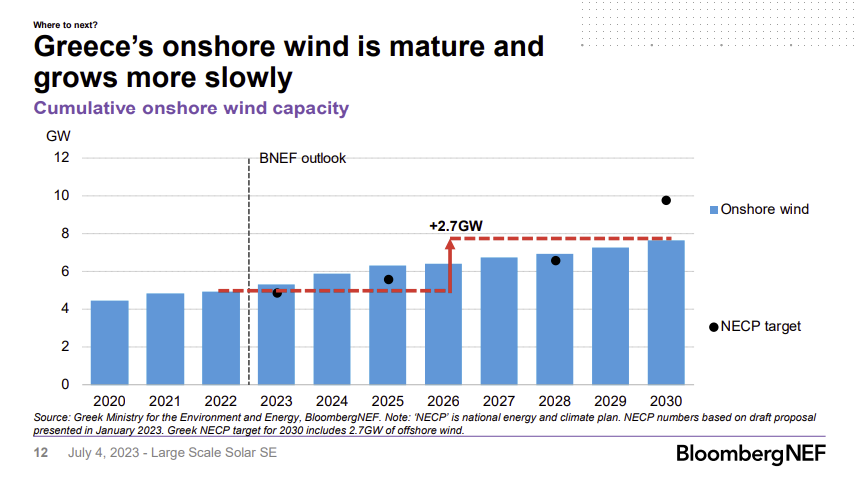
It is important to note that the impact of renewable energy sources on Greece’s energy system is increasing. A characteristic example of this is the week from 12 to 18 June, during which renewable energy sources occupied a significant share of the country’s daily electricity production.
